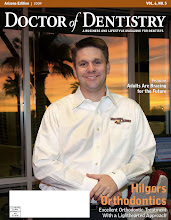Should you need to call
Hilgers Orthodontics in case you sustain any damage to your braces, we can help you more effectively if you can tell us exactly which piece is in trouble! Here’s a handy diagram and corresponding list of all the parts that make up your braces.

Elastic Tie: Tiny rubber band that fits around the bracket to hold the archwire in place.
Archwire: The main wire that acts as a track to guide the teeth along. It's changed periodically throughout treatment, as teeth move to their new positions.
Loop in Archwire: Frequently used for closing space left by an extraction. Many archwires don't have a loop.
Bracket: Small attachment that holds the archwire in place. Most often, a bracket is cemented directly onto the tooth's surface, eliminating the need for a band.
Headgear Tube: Round, hollow attachment on the back bands. The inner bow of the headgear fits into it.
Coil Spring: Fits between brackets and over archwire to open space between teeth.
Tie Wire: Fine wire that is twisted around the bracket to hold the archwire in place.
Band: A thin ring of metal fitted around a tooth and cemented in place. The band provides a way to attach the brackets to the tooth.
Hook: Welded or removable arm to which elastics (rubber bands) are attached.
Elastic (Rubber Band): Small rubber band that is hooked between different points on the appliance to provide pressure to move the teeth.
Hope this helps!
Give us a call if you have any questions!
--
Dr. Hilgers and
team.














